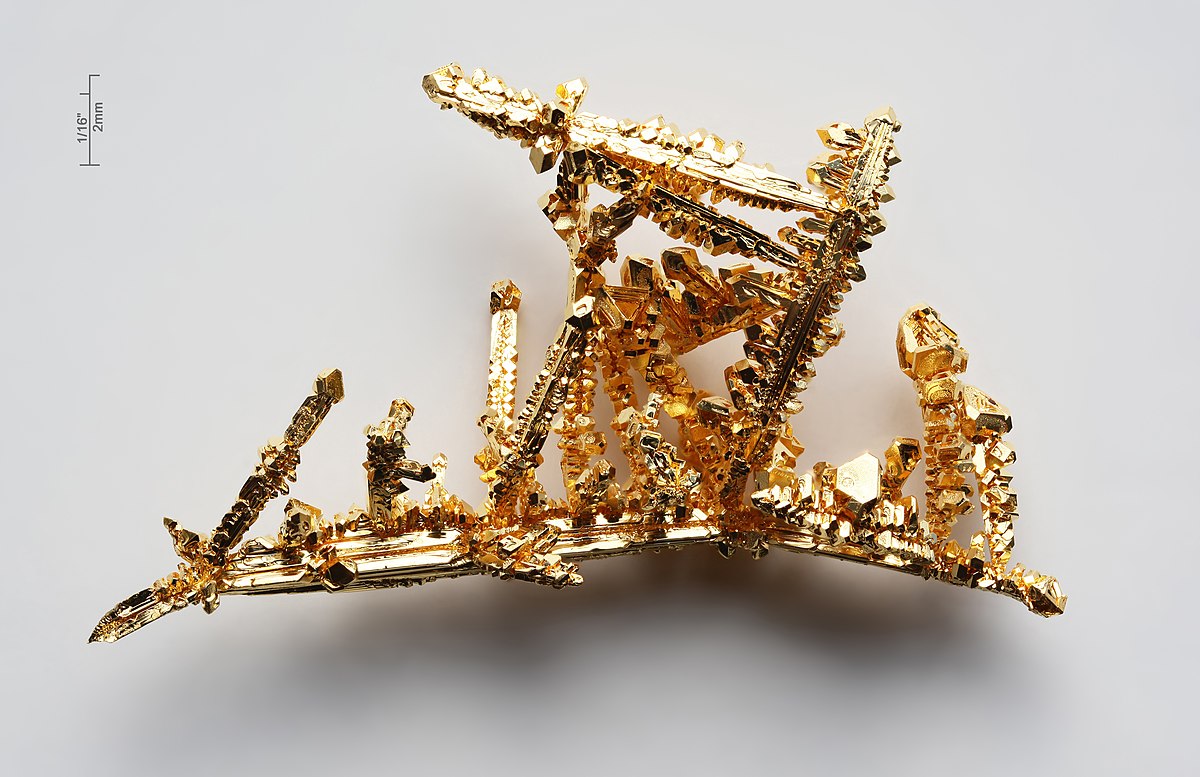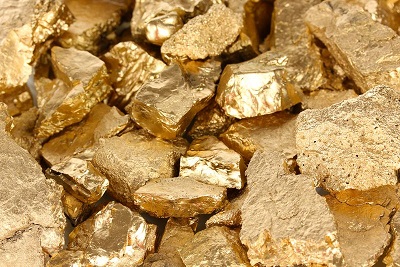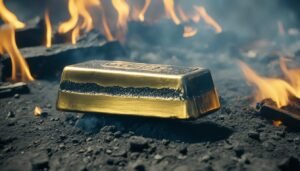Did you ever wonder how gold, that precious metal highly valued for centuries, is created?
From ancient civilizations to modern times, gold has captivated humanity with its allure and beauty. But have you ever stopped to think about where it comes from?
The journey of gold formation begins deep within the Earth’s crust, in a process that involves exploration and the making of this remarkable element. It may surprise you to know that gold is not just another metal on the periodic table; it holds a special place in our history and culture.
Key Takeaways
💎 Origins of Gold: Gold’s formation starts deep within the Earth’s crust, emerging from activities like volcanic eruptions or being deposited by flowing water over millions of years.
🌌 Supernovae Explosions: Gold has its beginnings in supernovae explosions, where extreme temperatures and pressures lead to the formation of elements like gold.
🌍 Geological Formations: Gold can be found in various geological formations, including quartz veins where it’s embedded and placer deposits formed by natural elements such as water.
🏺 Historical Significance: Gold has played an essential role throughout human history, from being revered by Ancient Egyptians to its influence during events like the California Gold Rush and Spanish conquests.
⛏️ Mining Processes: Gold extraction methods include open-pit mining, underground mining, and cyanide leaching to separate gold from its ore.
So, how does this extraordinary substance form?
Let’s delve into the captivating story of how gold, one of the most sought-after metals, takes shape and becomes the treasure we all admire.
Gold’s mesmerizing journey starts with its unique ability to form in various environments, each leaving its distinct mark on this precious metal. Whether it emerges from volcanic activity or is deposited by flowing water over millions of years, gold, a metal, takes on different forms throughout its creation process. Understanding this fascinating transformation provides us with insights into the origin and characteristics of one of nature’s most cherished treasures.
Get ready to explore the depths of our planet and uncover the secrets behind how precious metals like gold come into being – a truly remarkable story that combines technology and space to reveal the wonders hidden beneath our feet.
Fascinating Journey of How Gold is Created: Origins and Sources of Gold
Gold, a precious metal that has captivated humans for centuries, has a truly fascinating journey of creation. To understand this captivating process, we must delve into the origins and sources of gold in the quartz-rich elements industry.
Supernovae Explosions: The Birthplace of Gold
Billions of years ago, in the fiery depths of supernovae explosions, precious metals like gold found their humble beginnings. These cataclysmic events occur when massive stars reach the end of their life cycle and explode with an incredible force. Within these cosmic explosions, the extreme temperatures and pressures give rise to the formation of heavy elements like gold, carbon, and quartz nuggets.
Geological Formations: Unveiling Hidden Treasures
Gold deposits can be found in various geological formations that hold secrets waiting to be discovered. One common source is quartz veins, where gold nuggets are often embedded within the mineral structure. These elements form when hot fluids rich in minerals flow through cracks in rocks and deposit their precious cargo of gold over time. The price of gold wax can fluctuate depending on market conditions.
Another significant source of gold is placer deposits, which consist of alluvial gold nuggets accumulated by natural elements such as running water. Over centuries or even millennia, rivers erode gold-bearing rocks and transport tiny particles downstream, eventually settling them along riverbanks or in sediment layers.
The price of these gold nuggets depends on their quality and size. Gold nuggets are often highly sought after by collectors and can fetch high prices in the market. The quality of the gold nuggets is often determined by the number of stars they receive based on their purity and weight.
Hydrothermal Fluids: Nature’s Precious Solution
Hydrothermal fluids, containing elements like gold, are transported by magma from deep within the Earth’s crust. These fluids deposit their valuable cargo in fractures or faults as they move towards cooler regions. The process involves the heating of these fluids by magma, making them essential in the delivery of gold to accessible locations.
Volcanic Activity: An Explosive Pathway
Volcanic activity also contributes to the creation and distribution of gold deposits. During volcanic eruptions, molten rock called magma rises from beneath the Earth’s surface. Along with it comes various gases and mineral-rich solutions that can contain traces of gold.
When these solutions cool and solidify, they form veins or other types of deposits that hold the precious metal. The elements of volcanic eruptions play a role in the formation of gold deposits, as magma carries mineral-rich solutions containing traces of gold.
Understanding the diverse sources of gold, from ancient supernovae explosions to hydrothermal fluids and volcanic activity, allows us to appreciate the intricate processes involved in its creation. Nature has bestowed upon us a remarkable treasure in the form of this precious metal, found in quartz veins or alluvial deposits.
Throughout human history, gold has captivated our imagination and served as a symbol of wealth and beauty. So next time you hold a gleaming gold coin in your hand, take a moment to ponder the extraordinary journey it undertook from its celestial origins as a star to becoming a cherished piece of currency.
Historical Significance and Discovery of Gold
Gold has played a significant role in human history since ancient times. From being revered as the “flesh of the gods” by the Ancient Egyptians to sparking a frenzy during the California Gold Rush, gold has left an indelible mark on civilizations throughout the ages.
Ancient Egyptians’ Reverence for Gold
The allure of gold can be traced back to the Ancient Egyptians who considered it sacred. They believed that gold was not only a symbol of wealth and power but also represented immortality. The Pharaohs adorned themselves with golden jewelry and buried their deceased rulers with lavish golden treasures to accompany them in the afterlife. This reverence for gold showcases its deep-rooted cultural significance and its association with divinity.
The California Gold Rush: A Turning Point in American History
One of the most iconic events in gold’s journey is undoubtedly the California Gold Rush of 1848. With the discovery of gold at Sutter’s Mill, thousands flocked to California in search of fortune, forever changing American history. The promise of striking it rich drew people from all walks of life – miners, merchants, adventurers – creating bustling towns overnight and fueling westward expansion.
The impact of the gold fields was not limited to economic prosperity; it also had profound social consequences. The influx of people searching for gold nuggets from diverse backgrounds transformed California into a melting pot where cultures collided, languages blended, and new communities emerged. The spirit of opportunity and adventure that defined this era still resonates today, fueled by the allure of molten gold and the allure of alluvial gold.
Spanish Conquistadors: Plundering South America’s Golden Treasures
In their quest for wealth and power, Spanish conquistadors set their sights on South America during the Age of Exploration. They plundered vast amounts of gold from civilizations such as the Inca Empire, leaving behind a trail of destruction but also shaping world history.
The conquistadors’ insatiable greed led them to ransack temples, seize gold artifacts, and demand tributes from the indigenous populations. The lure of gold fueled their conquests, driving them deeper into uncharted territories and forever altering the course of South American civilizations.
The fascinating journey of how gold is created spans centuries and continents, leaving an indelible mark on human history. From its revered status in Ancient Egypt to the transformative impact of events like the California Gold Rush and Spanish conquests, gold’s allure continues to captivate us today. Its enduring value as a symbol of wealth and power serves as a testament to its timeless appeal.
Gold Formation: Natural Processes and Origins
Gold formation is a captivating journey that involves intricate geological processes, ultimately giving rise to this precious metal. Through the interplay of heat, pressure, and various natural phenomena, gold emerges as a testament to the wonders of our planet’s history.
Complex Geological Processes
To understand how gold is formed, we must delve into the depths of our planet where immense heat and pressure shape its creation. The process begins deep within the Earth’s core, where nuclear fusion produces heavy elements like gold. Over billions of years, these elements gradually make their way towards the surface through volcanic activity and other geological forces.
Hydrothermal Fluids and Deposition
One remarkable aspect of gold formation lies in hydrothermal fluids. These fluids act as vehicles for transporting gold-rich solutions from deep within the Earth’s crust into cracks and fissures present in rocks. As these fluids cool down, they deposit minerals containing gold onto the surrounding rock surfaces. This deposition process occurs over vast periods of time, gradually accumulating significant amounts of gold within host rocks.
Placer Deposits: Erosion Unveils Gold
Another fascinating avenue through which gold is revealed is through placer deposits. These deposits form when water erodes gold from its source rocks, such as quartz veins or other mineralized formations. The erosive force carries small particles of gold downstream until they settle in riverbeds or other sedimentary environments. Miners have long utilized this method to extract alluvial or placer gold by panning or sluicing these deposits.
The journey of how natural processes create gold encompasses an array of intriguing factors – from elemental synthesis within the heart of our planet to transportation via hydrothermal fluids and eventual deposition in host rocks. It is worth noting that while most naturally occurring gold originates from geological processes on Earth, there are instances where it can also be found in meteorites originating from outer space.
Global Gold Reserves and Availability
South Africa holds the largest known gold reserves in the world. With a rich history of gold mining, this African nation has been a major player in the global gold market for decades. Its vast reserves have made it a significant contributor to meeting the global gold demand.
China, on the other hand, has emerged as the leading producer of gold in recent years. The country’s rapid economic growth and industrial development have fueled an increased demand for this precious metal. As a result, China has ramped up its mining operations to become a dominant force in the global gold market.
Despite extensive mining activities worldwide, there are still unexplored regions that hold potential gold reserves. These untapped areas present exciting opportunities for future exploration and discovery. Geologists and prospectors continue to search for new deposits using advanced tools and technology.
The process of extracting gold from these reserves requires significant amounts of energy. Mining operations consume substantial power to excavate, crush, and process ore-containing traces of this precious metal. Refining processes also demand considerable energy resources.
Gold finds its way into various industries due to its unique properties. It is widely used in jewelry-making due to its lustrous appearance and durability. In addition to its aesthetic appeal, gold is also utilized extensively in electronic devices such as smartphones and computers due to its excellent conductivity properties.
The availability of gold plays a crucial role in determining its value in the market. As demand continues to rise across different sectors, ensuring a steady supply becomes essential. Mining companies constantly strive to meet this demand while exploring sustainable practices that minimize environmental impact.

Mining Gold Ore Extraction Process
Gold ore is a precious resource that has captivated humanity for centuries. Its allure and value have driven people to embark on the fascinating journey of discovering and extracting this treasured metal from the earth. The process of mining gold ore involves various techniques, each with its own unique characteristics and challenges.
Open-pit mining: Unveiling Earth’s Hidden Riches
One popular method of extracting gold ore is through open-pit mining. This technique requires removing overlying soil and rock layers to access the gold-bearing ore beneath. Massive machines, such as excavators and bulldozers, are employed to strip away the surface materials, exposing the valuable deposits hidden below.
Open-pit mining offers several advantages. Firstly, it allows for efficient extraction over large areas, maximizing the potential yield of gold ore. It enables easy access to the site for workers and machinery alike. However, this method can also have environmental consequences due to soil erosion and habitat disruption.
Underground mining: Delving into Earth’s Depths
Another approach to extracting gold ore is underground mining. This method involves creating tunnels beneath the surface to access deposits that cannot be reached through open-pit mining. Miners navigate these intricate networks using specialized equipment like drills and explosives to extract the precious resource.
Underground mining presents its own set of challenges and rewards. On one hand, it provides access to deeper reserves that may contain higher concentrations of gold quartz—a type of rock containing significant amounts of gold—resulting in greater profitability for mining companies. On the other hand, working underground poses safety risks due to potential collapses or gas build-ups.
Cyanide leaching: Separating Gold from Crushed Ore
Once extracted from either open-pit or underground mines, raw gold ore undergoes further processing before it can be refined into pure gold. One commonly used technique is cyanide leaching. In this process, crushed ore is mixed with a dilute solution of sodium cyanide, which forms a soluble compound with gold.
The cyanide and gold mixture undergoes further chemical reactions to separate the gold from other impurities. This refined gold can then be used for various purposes, such as jewelry, electronics, or investment.
While cyanide leaching is an effective method for extracting gold from ore, it has raised concerns due to its potential environmental impact. Proper handling and disposal of cyanide are crucial to minimize harm to ecosystems and ensure the safety of workers involved in the process.
Gold in Ocean Water: Myth or Reality?
Gold exists in trace amounts in seawater but not at economically viable levels for extraction. The idea of gold lurking within the vast expanse of ocean water has intrigued many, leading to the question: is there really gold present in our oceans? While it may seem like an enticing possibility, the truth is far less glamorous.
The concentration of dissolved gold varies depending on location and depth in oceans. Although gold does exist in ocean water, it is found only in minuscule quantities that are uneconomical to extract. The concentration of dissolved gold can vary significantly based on factors such as location and depth. For instance, areas near underwater volcanic activity tend to have higher concentrations of dissolved gold due to hydrothermal vents releasing minerals into the water.
Seawater contains approximately 13 billion tons of dissolved gold globally. While it may be surprising to learn that there is a substantial amount of gold dispersed throughout our oceans, extracting this precious metal from seawater remains impractical. In fact, estimates suggest that there are around 13 billion tons of dissolved gold worldwide. However, the extremely low concentrations make it unfeasible to harvest this resource on a large scale.
In reality, the notion of extracting gold from ocean water faces numerous challenges and limitations. The process involved would require immense resources and energy expenditure while yielding minimal returns. Current extraction techniques are inefficient and costly when applied to such vast bodies of water.
So why does gold exist in seawater if it cannot be extracted economically? One theory suggests that over millions of years, rivers have carried minute particles of eroded rocks containing traces of gold into the ocean. This gradual accumulation has resulted in the presence of small amounts of dissolved gold across our oceans.
While we may not be able to tap into this hidden treasure trove beneath the waves, understanding its existence provides valuable insights into Earth’s geological history and processes. Exploring how gold interacts with ocean water helps scientists gain a deeper understanding of the planet’s natural cycles and the distribution of elements within our environment.

Reflecting on the Remarkable Journey of Gold
In conclusion, the fascinating journey of how gold is created takes us on a captivating exploration of its origins, historical significance, formation processes, global reserves, and mining methods.
We have learned that gold has a rich history, with its discovery sparking significant cultural and economic transformations throughout time. Its rarity and enduring allure have made it highly sought after across civilizations.
Understanding the natural processes behind gold formation has allowed us to appreciate the intricate mechanisms that shape this precious metal. From ancient hydrothermal vents to explosive supernovas, the universe plays a vital role in creating this remarkable element.
Despite its scarcity in nature, gold can be found in various locations around the world. Global reserves are distributed unevenly, with some countries boasting substantial deposits while others rely on imports. This knowledge highlights the importance of responsible mining practices and sustainable resource management.
Speaking of mining, we have delved into the complex process of extracting gold from ore. From prospecting to refining techniques, miners employ sophisticated methods to uncover this valuable treasure buried deep within the Earth’s crust.
While rumors persist about gold being present in ocean water, scientific evidence suggests otherwise. Although trace amounts can be found in seawater, extracting them is currently not economically viable or practical.
Now that we have explored the remarkable journey of gold creation together, you may be wondering how you can engage with this precious metal yourself:
- Investment Opportunities: Consider diversifying your investment portfolio by including gold as a hedge against inflation or market volatility.
- Jewelry and Fashion: Explore unique designs crafted from this timeless metal to add elegance and style to your wardrobe.
- Gifts and Mementos: Celebrate special occasions by gifting loved ones with beautifully crafted gold jewelry or commemorative pieces.
- Educational Pursuits: Further expand your knowledge by exploring books or documentaries that delve deeper into the captivating world of gold.
- Responsible Consumption: Support ethical and sustainable practices by choosing jewelry and products sourced from responsible mining operations.
Remember, the journey of gold continues to captivate and inspire us. Its enduring value and allure make it a precious asset worth exploring further.









